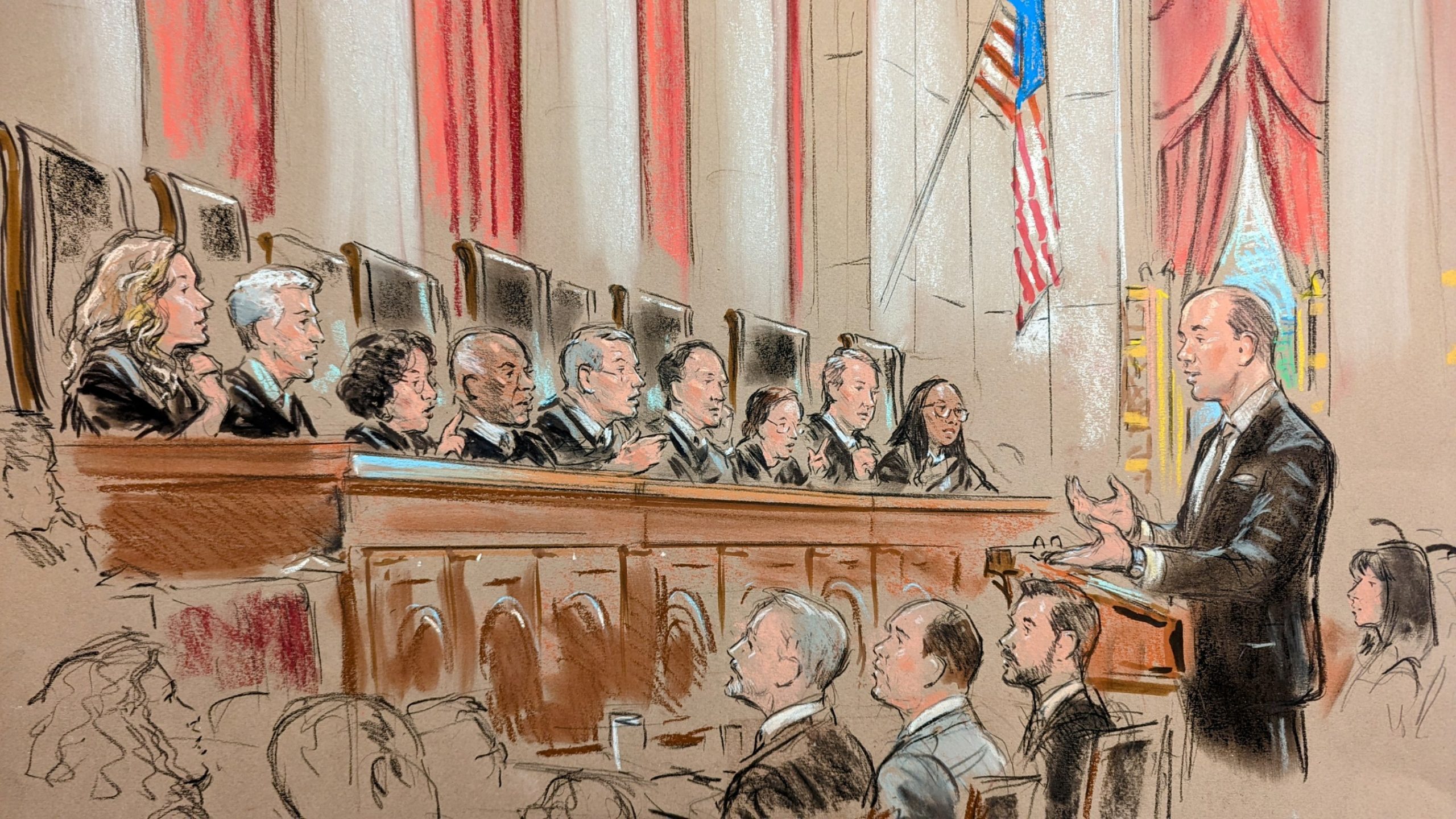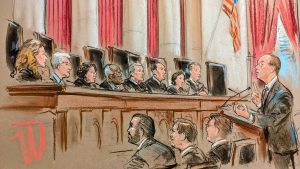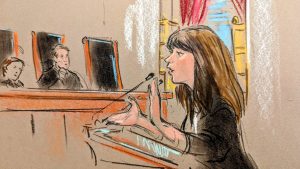Supreme Court likely to discard Chevron


It has been nearly 40 years since the Supreme Court indicated in Chevron v. Natural Resources Defense Council that courts should defer to an agency’s reasonable interpretation of an ambiguous statute. After more than three-and-a-half hours of oral argument on Wednesday, it seemed unlikely that the rule outlined in that case, known as the Chevron doctrine, will survive in its current form. A majority of the justices seemed ready to jettison the doctrine or at the very least significantly limit it.
The court’s ruling could have ripple effects across the federal government, where agencies frequently use highly trained experts to interpret and implement federal laws. Although the doctrine was relatively noncontroversial when it was first introduced in 1984, in recent years conservatives – including some members of the Supreme Court – have called for it to be overruled.
The plea to overturn the Chevron doctrine came to the court in two cases challenging a rule, issued by the National Marine Fisheries Service, that requires the herring industry to bear the costs of observers on fishing boats. Applying Chevron, both the U.S. Court of Appeals for the District of Columbia Circuit and the U.S. Court of Appeals for the 1st Circuit upheld the rule, finding it to be a reasonable interpretation of federal law.
The fishing companies came to the Supreme Court, asking the justices to weigh in on the rule itself but also to overrule Chevron. Roman Martinez, representing one group of fishing vessels, told the justices that the Chevron doctrine undermines the duty of courts to say what the law is and violates the federal law governing administrative agencies, which similarly requires courts to undertake a fresh review of legal questions. Under the Chevron doctrine, he observed, even if all nine Supreme Court justices agree that the fishing vessels’ interpretation of federal fishing law is better than the NMFS’s interpretation, they would still be required to defer to the agency’s interpretation as long as it was reasonable. Such a result, Martinez concluded, is “not consistent with the rule of law.”

Arguing on behalf of the second group of fishing companies, Paul Clement echoed Martinez’s points. Emphasizing that his clients’ case “well illustrates the real world costs of the Chevron” doctrine for small businesses, he decried the doctrine as “hopeless ambiguous” and “reliance destroying.” The question in this challenge to the rule, he said should focus on what the best reading of the statute is.
Representing the Biden administration, U.S. Solicitor General Elizabeth Prelogar urged the justices to leave the Chevron doctrine in place, telling them that it has “deep roots in this Court’s jurisprudence.” Under the doctrine of stare decisis – the idea that courts should generally adhere to their prior cases – the court would need a “truly extraordinary justification” to overrule it, which the challengers do not have, she asserted.
The court’s three liberal justices expressed support for keeping the doctrine in place. Justice Elena Kagan repeatedly suggested that federal agencies, with their scientific and technical expertise, are better suited than courts to resolve ambiguities in a federal statute.
Kagan cited as one example a hypothetical bill to regulate artificial intelligence. Congress, she said, “knows there are going to be gaps because Congress can hardly see a week in the future.” So it would want people “who actually know about AI and are accountable to the political process to make decisions” about artificial intelligence. Courts, she emphasized, “don’t even know what the questions are about AI,” much less the answers.
Justice Sonia Sotomayor agreed with Kagan. She doubted whether there can be a “best” interpretation of a law when the justices “routinely disagree” about a law’s meaning. The real question, she said, is who makes the choice about what an ambiguous law means. And if the court needs a “tie-breaker,” she continued, why shouldn’t it defer to the agency, with its expertise?
Justice Ketanji Brown Jackson posited that the Chevron doctrine serves an important purpose. Under Chevron, she suggested, Congress gives federal agencies the power to make policy choices – such as filling gaps or defining terms in the statute. But if Chevron is overturned and agencies no longer have that power, she predicted, then courts will have to make those kinds of policy decisions.
But Justice Brett Kavanaugh saw Chevron’s deference to agencies differently. Chevron, he complained, “ushers in shocks to the system every four or eight years when a new administration comes in” and implements “massive change” in areas like securities law, communications law, and environmental law.

Justice Neil Gorsuch told Prelogar that he was less concerned about businesses subject to changing regulations, observing that the companies “can take care of themselves” and seek relief through the political process. Instead, Gorsuch pointed to less powerful individuals who may be affected by the actions of federal agencies, such as immigrants, veterans seeking benefits, and Social Security claimants. In those cases, Gorsuch stressed, Chevron virtually always works for the agencies and against the “little guy.”
Justice Samuel Alito pressed Prelogar to explain when a statute would be ambiguous, triggering the application of the Chevron doctrine. He observed that “in cases that don’t involve an agency,” courts do not simply throw up their hands and declare that they cannot determine what the statute means. “So that would seem to suggest that you never get to step two” of the Chevron test, requiring courts to defer to the agency’s interpretation.
The justices and advocates also debated what the impact of a decision overruling Chevron would be. Chief Justice John Roberts suggested that the effect might be relatively minimal, noting that the Supreme Court had not relied on Chevron in several years.
Martinez countered that the issue still arises frequently in the lower courts, but he insisted that overruling Chevron would not call prior cases relying on Chevron into question.
But Prelogar pushed back, telling the justices that thousands of rulings “would be open to challenge.” “Litigants,” she said, “will come out of the woodwork.”
Prelogar suggested that the court could follow the path that it chose five years ago in Kisor v. Wilkie, in which the justices declined to overrule a long line of cases instructing courts to defer to an agency’s interpretation of its own regulation, a doctrine sometimes known as Auer deference. Instead, a splintered court put limits on when Auer deference should apply going forward.
In this case, Prelogar told the justices, the court could “clarify and articulate the limits of Chevron deference without taking the drastic step of upending decades of settled precedent.” For example, she explained, the justices could “reemphasize” that, in determining whether the statute is clear, courts should use all of the interpretative tools at their disposal and not “give up just because the statute is dense or hard to parse.” And if the statute is still determined to be ambiguous, she said, the question whether it is reasonable should be “obviously deferential” but “not just anything goes.”
Martinez rejected any suggestion that the Chevron doctrine should be limited but not overruled. The justices, he said, should “recognize that the fundamental problem is Chevron itself.” By the time the session drew to a close, it seemed – but was not completely clear – that a majority of the justices agreed with him.
This article was originally published at Howe on the Court.
Posted in Merits Cases
Cases: Relentless, Inc. v. Department of Commerce, Loper Bright Enterprises v. Raimondo